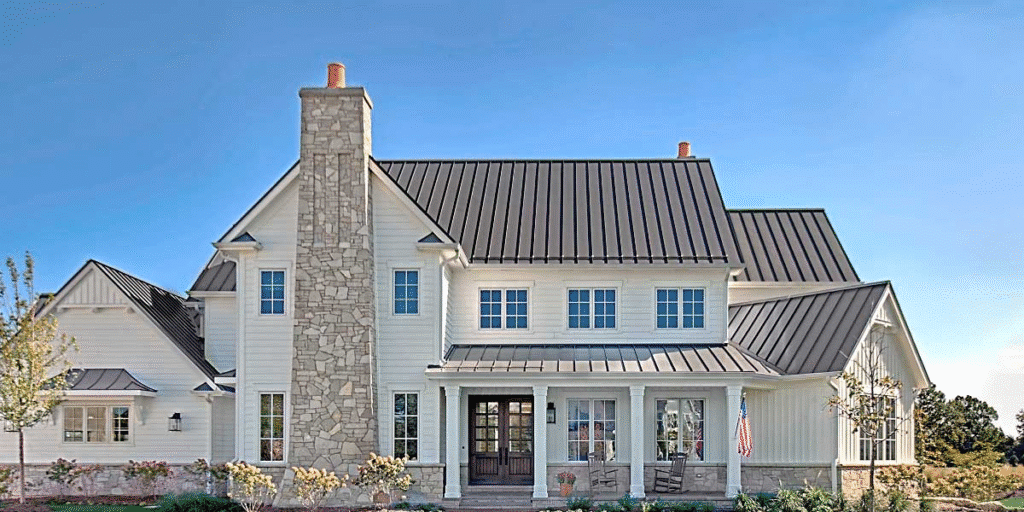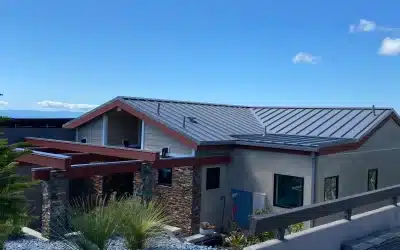Want to know what could make or break your winter construction budget this year? Steel prices remain one of the most vital variables that affect project planning and execution in the cold months.
The winter season creates distinct challenges for construction and metal fabrication projects. The current steel market requires careful attention to create effective budgets and plans. Today’s steel prices shift based on many factors from supply chain disruptions to global economic conditions. Our clients track these changes through steel price charts or follow market news to predict future movements. A clear understanding of current prices and global trends helps us direct our customers to make smart purchasing choices.
Table of Contents
- Understanding the Current Steel Market
- How Steel Trends Affect Winter Project Planning
- Smart Planning Strategies for Winter Projects
- Conclusion
- FAQs
This piece explores how market dynamics shape your winter project planning and outlines strategies to help you adapt to this changing market successfully.
Understanding the Current Steel Market
The steel market in 2025 shows major ups and downs that affect project costs and timelines directly. Your material costs depend on many connected factors. Raw material supply, energy costs, trade policies, and seasonal demands all play key roles in price setting. Market trends look quite interesting these days. Some regions face higher production costs, which affects the entire supply chain. Delivery delays remain a challenge, especially if you plan winter projects with tight schedules. Local producers have adapted to new demand patterns. Yet, steel imports still affect market stability by a lot.
The steel prices charts from recent months show moderate swings with sharp rises matching energy cost spikes. Latest steel prices news hints at stable prices through winter, but nobody can say for sure. Here at Western Slope Metals, we closely monitor global steel price trends to help our clients make informed decisions. Market experts note that several factors could influence prices in the coming months. Energy policies, manufacturing performance, and infrastructure spending are all important considerations as you plan your winter projects. So, knowing these market basics helps you avoid budget problems and material shortages.
How Steel Trends Affect Winter Project Planning
Steel market dynamics create unique challenges for winter projects. Cold-weather work demands careful planning that accounts for seasonal limitations and material availability. Steel market trends significantly impact your winter project strategy. Delivery schedules stretch out during winter months. Summer’s typical two-week lead time often extends to three or four weeks as weather slows down transportation networks. Project teams must order materials earlier than usual.
More importantly, steel prices today follow seasonal patterns that experienced planners expect. Our observations show prices often stabilize or drop slightly in early winter before they rise as spring approaches. Teams can spot these patterns and find the best times to buy by tracking steel prices charts. Winter projects face different budget impacts from price changes. The project’s cost variables already include frozen ground conditions, shorter daylight hours, and weather delays. Teams need to lock in material costs quickly to keep the budget under control.
Yes, it is crucial to balance multiple moving pieces for winter projects to succeed. This includes managing both the physical demands of cold-weather construction and making smart steel purchasing decisions. A project stays on track regardless of the temperature when teams plan with these connected factors in mind. At Western Slope Metals, our project planning services and winter construction expertise help clients coordinate schedules, budgets, and material procurement, ensuring smooth execution from start to finish.
Smart Planning Strategies for Winter Projects
Smart planning before winter arrives plays a crucial role in steel project success. Time and money savings come from your ability to predict market movements and seasonal limitations. Your first step should focus on establishing price monitoring systems. Rather than checking steel prices today randomly, you need regular tracking mechanisms that use reliable steel prices charts from industry sources. These tracking systems give you insights into trends that occasional checks miss.
Building relationships with multiple suppliers strengthens your position. Relying on a single source becomes risky especially when you have winter weather disrupting deliveries. Experience shows that maintaining strong ties with at least three dependable vendors gives you the flexibility needed during supply chain constraints. Placing material orders gradually works better than bulk purchases. This strategy helps you take advantage of favorable current steel prices as you spread your financial commitments throughout the project timeline. Many suppliers offer fixed pricing for orders within specific timeframes, making it worth exploring these options.
Weather contingencies should be built into both your schedule and budget. Winter projects often face delays, so buffer zones help prevent cascading issues when storms hit. A smart approach is to reserve 5-10% of your material budget for potential steel price increases during the project. Our well trained team offers expert guidance and hands-on support through our project planning services and winter construction expertise, ensuring your projects stay on track and within budget.
Conclusion
Winter projects bring unique challenges that need smart planning and market awareness. This piece shows how steel prices change based on many factors from global economic conditions to seasonal needs. These changes affect your project budgets, timelines, and overall success in cold months. You need to monitor steel prices to plan winter projects effectively. Tracking current trends helps you spot the best times to buy and save money. Companies that keep an eye on steel price charts make better decisions than those who react to market changes.
Bad weather and market swings create tough planning conditions. The strategies we discussed are the foundations of success: setting up price tracking systems, building relationships with multiple suppliers, ordering materials in stages, and planning for weather delays. Winter brings longer delivery times, so early planning makes all the difference. Our clients found that ordering materials 3-4 weeks earlier than summer projects helps reduce weather delays.
Understanding the steel market is your best defense against winter construction cost overruns. We can’t control the weather or global markets, but we can definitely prepare for them. Successful winter projects don’t happen by chance; they come from careful planning that considers seasonal challenges and material costs. Your winter project’s success depends on preparation that starts before the first snowfall. Smart planning today leads to smoother execution tomorrow, whatever the temperature reads or how steel prices change during your timeline.
FAQs
How are current steel prices affecting winter construction projects?
Steel prices are experiencing fluctuations due to various factors, including supply chain disruptions and global economic conditions. These changes can significantly impact project costs and timelines, especially during winter when construction faces additional challenges.
What strategies can help manage steel price volatility in winter projects?
Key strategies include monitoring steel price charts regularly, developing relationships with multiple suppliers, ordering materials progressively, and building weather contingencies into both scheduling and budgeting. These approaches can help mitigate risks associated with price fluctuations and seasonal challenges.
Why is early planning crucial for winter steel projects?
Early planning is essential because winter projects face extended delivery times and potential weather-related delays. Ordering materials 3-4 weeks earlier than for summer projects can help mitigate these issues and keep projects on schedule.
How does the steel market typically behave during winter months?
Steel prices often stabilize or slightly decrease in early winter before potentially rising as spring approaches. However, market behavior can vary based on factors like energy costs, manufacturing sector performance, and infrastructure spending.
What are the unique challenges of winter construction projects involving steel?
Winter projects face challenges such as frozen ground conditions, shorter daylight hours, and weather delays. These factors, combined with potential steel price volatility, make careful planning and budgeting even more critical for successful project execution.
Preparing for Winter Projects With Steel Market Trends in Mind
→ Understand current steel pricing and availability before starting your project
→ Get expert insights to choose materials that balance durability and cost
→ Plan ahead with confidence for winter builds and long-term performance
Start Your Winter Project Planning with Expert Steel Guidance →
★★★★★ Trusted resource for contractors and homeowners preparing smarter with steel market insights
Related articles







